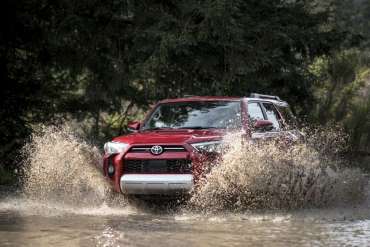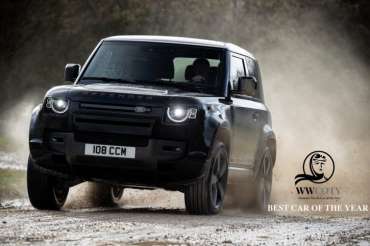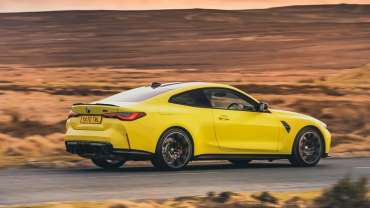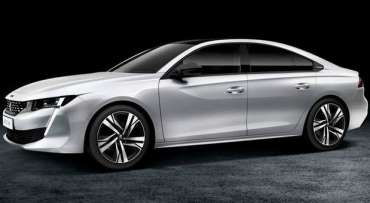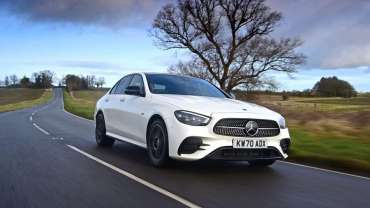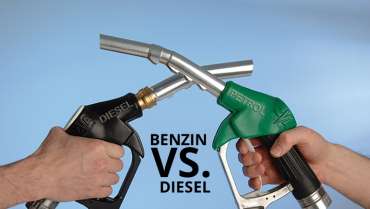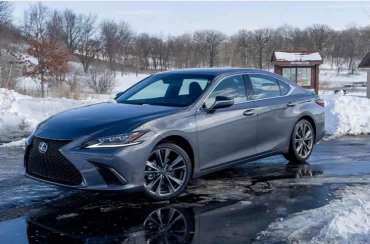
Worldcarblog.com
New Toyota 4Runner Coming in 2023? Find Out Here!
Apart from being the fan-favorite Toyota model in the lineup and being one of the last North American models still assembled in Japan, the Toyota 4Runner is consistent. In fact we’ve often referred to this iconic off-roader as the king of consistency. For the better part of 11 years, the fifth model generation has been available at dealerships and commanding trails. While we at Toyota of Clermont are thoroughly enamored by the current model year, even we have to admit that change is long overdue for 4Runner. Whether it be now or later, a large-scale overhaul is due for the popular Toyota SUV and we’ve seen some rumors that seemingly confirm this.
If you want to know more, read along with us at Toyota of Clermont!
What Might Be in Store for a New Toyota 4Runner
The Toyota 4Runner has been in its 5th generation since 2009 and many drivers are clamoring for a change to the body-on-frame SUV. While Toyota has not confirmed anything regarding a new generation 4Runner and what features it might have, many fans have been speculating a laundry list of changes they want to see happen.
Engineering
Toyota is rumored to be making large-scale changes to the engineering features in many Clermont models. Larger models like the Tundra and Toyota 4Runner have largely remained untouched but that could all change soon. After all, Toyota has vowed to offer some form of electrification in its vehicles in the near future. For the 4Runner, this could mean the introduction of a hybrid drivetrain. This could vastly improve the fuel efficiency of this meaty Clermont Toyota SUV and add a bit of extra speed to its wheel house.
There’s also an idea floating around that there could be several engine options available on the next generation Toyota 4Runner. Many fans favor the current 4.0-liter V6, but adding larger and smaller options could reduce the overall cost and prime the Clermont 4Runner for wider appeal. It’s also possible that Toyota could integrate a turbocharger or other options in a new generation.
Exterior
As with all generational shifts there’s a dramatic exterior design overhaul. We expect nothing less for the Clermont Toyota 4Runner. But, what would that look like? More than likely, Toyota will retain the high-profile and muscular design of the current 4Runner. However, the front grille is likely to change along with the rear-end, and sides. Due to the popularity of enhanced special editions for this generation, the next generation 4Runner might include accessories like roof baskets, tow kits, and other off-roading gear standard.
Interior
Again, new generations mean large-scale changes to just about everything. The interior of the current generation Toyota 4Runner has received its fair share of complaints. For a new generation of this Clermont Toyota SUV you can likely expect to see new infotainment options, a wider array of upholstery materials to choose from, better stylistic elements, and better space distribution.
One thing’s for sure, the power rear-window needs to stay!
Shop for a Toyota 4Runner with Toyota of Clermont Today
While it’ll be some time before the next generation Toyota 4Runner heads our way, you can still experience the Toyota 4Runner today at Toyota of Clermont! Shop our inventory online anytime and visit the dealership at 16851 State Road 50 for a test drive.
Posted in New Toyota
The "Car of the Year" chosen by women is the Land Rover Defender
A jury composed of 50 automotive journalists from 38 countries around the world yesterday chose the Land Rover Defender as the best car of 2021.
After dozens of tests, the British SUV won the most points in the women's selection for "Car of the Year". The new Defender is the overall winner, while the following models have won awards in other categories.
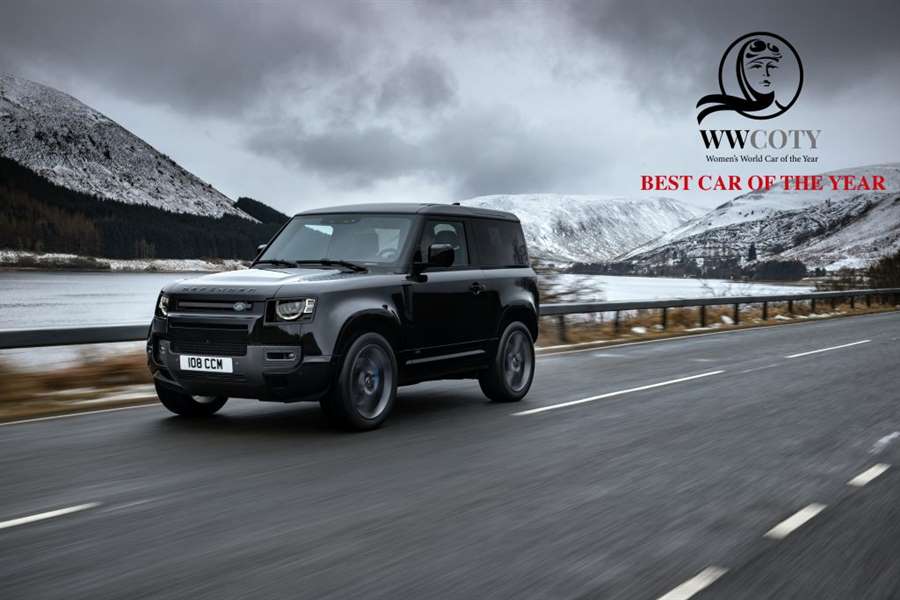
Thus, the Peugeot 208 is the "Best City Model", the Škoda Octavia is the "Best Family Car", the Lexus LC 500 Cabrio has won the title of "Best Luxury Convertible", while the Ferrari F8 Spider has triumphed among sports models. In the category "Best City Crossover", Peugeot 2008 won, and Land Rover Defender is the best in the class of medium SUV models.
The Kia Sorento received the most points in the "Large SUV" category, and the best pick-up was the Ford F-150. In the end, the Honda E was chosen as the best electric model.
Model testing was conducted throughout 2020, and after scoring in various categories, such as safety, performance, comfort, technology and value, automotive journalists gave the most points to Land Rover Defender.
BMW M4 Competition review
If someone had have told you twenty years ago that the latest BMW M4 (or M3, as it was universally called back then) would have over 500bhp, a choice of all-wheel drive – but no manual gearbox – and styling loud enough to send seasoned M enthusiasts off into the arms of AMG, you’d no doubt wonder what potent blend of super glue they’d been inhaling before bed.
Yet, here we are in 2021 where the crazy proclamations of yesteryear have indeed come true. The G82 version of one of BMW’s most famous names is all of the above. Granted, a six-speed three-pedal version is available elsewhere, but on these shores it’s eight-speed ZF only. And yes, the debate over the styling still rages on. I’ve grown to like it, chiefly because it dares to be different from every copy and paste vanilla car on sale today. But let’s not go down that rabbit hole…
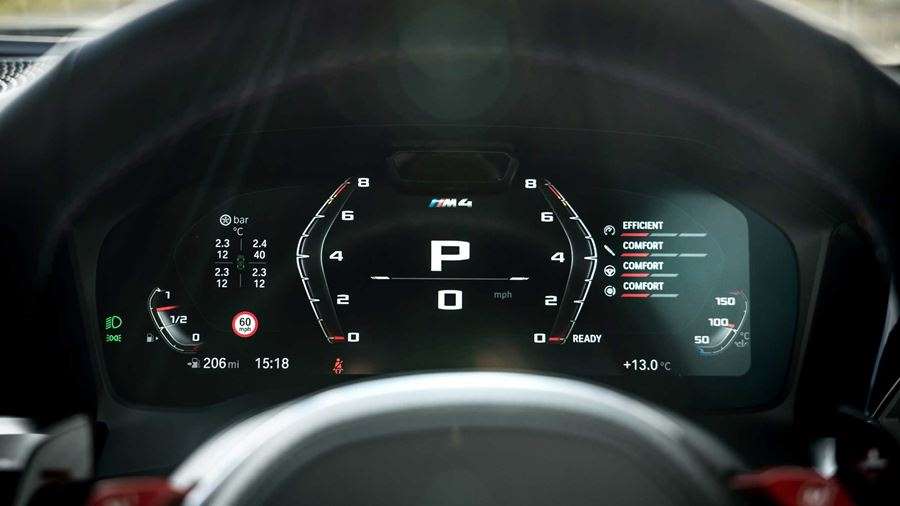
What are the headline figures?
As well as the manual gearbox, UK buyers have also been denied the ‘standard’ car, so it’s Competition only for the G82 and its M3 sibling. That means pre-pumped outputs of 503bhp and 479lb ft of torque – up 59bhp and 73lb ft on the outgoing F82 Competition. Big gains? Quite. But also big dollar, with this latest M4 coming in with a £76,000 asking price (our test car was knocking on for £90k).
0-62mph is done in 3.9 seconds while top speed hits the heady heights of 180mph if you pay the nice people in Munich a little extra for the M Sport Pro Package. It’s a seriously juicy set of stats for a game of Top Trumps, yet the truth is that we’ve come to expect nothing less when one of Germany’s big three releases a flagship performance car.
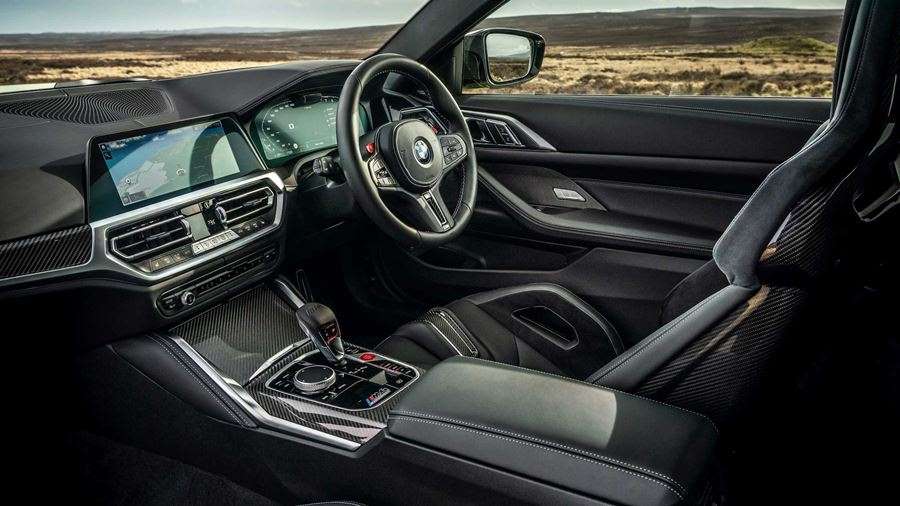
What’s of more importance, is how this M4 serves its power up compared with its predecessor. There’s plenty of tales from drivers who got behind the wheel of early F82s, likening the experience to driving a 400bhp supermarket trolly. You were never quite sure what it was going to do next and as a result, it felt like it was trying to spit you off into the nearest hedge.
Happily, things have since moved forward and BMW’s engineers have smoothed out the torque delivery in the S58 engine. It comes in from almost 1,000 revs later, and there’s a far more linear curve as it hauls through the mid-range leaving Porsche 911 Carreras in its wake. Catch it below 2,500rpm and you’ll detect tangible lag, yet it’s fleeting and insignificant compared with the sheer breadth of pulling power on offer.
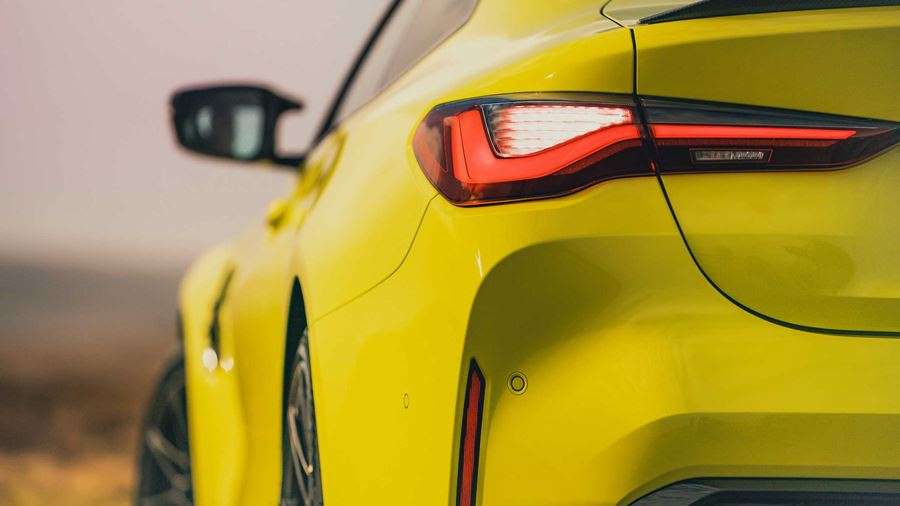
It’s a level of flexibility that would scarcely have been believable not so long ago, yet the M4’s engine delivers at both ends of the scale. Almost as soon as the torque dies down, the endearingly frantic top end takes over and gives you just enough encouragement to ring out those final few revs before pulling the upshift paddle at 7,600rpm. If it wasn’t already clear, this is a blisteringly quick car.
BMW’s done a decent job with the sound, too. No doubt it’s synthesised, yet there’s enough going on, not just from the electronically controlled exhaust flaps, but the engine itself, to mean it should be slightly less controversial than the tones of its S55 predecessor.
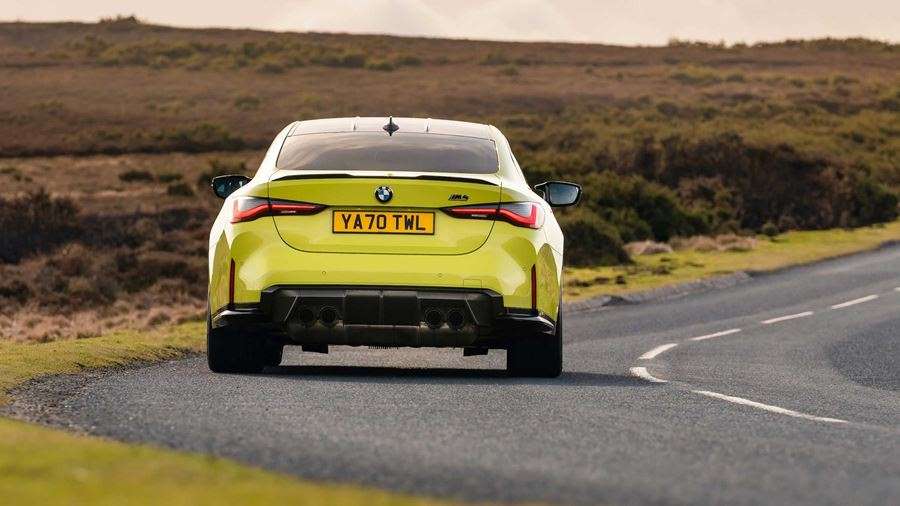
It’s a real shame, then, that the eight-speed gearbox can’t doesn’t feel as confident as the rest of the powertrain. Everyday driving shows off its greatest strength of smooth, slick, well-timed changes, yet start to drive enthusiastically and the downshifts are underwhelming. There’s not the same level of decisiveness or aggression as Porsche’s PDK, for example, and despite the number of ratios being the same, each gear feels less distinctive.
What about the handling?
Before I get into that, it’s worth highlighting that most of my time in the M4 was spent on track with the optional Michelin Pilot Sport Cup 2 tyres, rather than the standard Pilot Sport 4S. I did have an on-road drive with the latter, but the following impressions will – largely – be based on my experience with the super sticky track tyres.
Although, a quick glance through the spec sheet and you might question whether the M4 Competition should be going anywhere near a track. Because, under the colossal power and torque figures you’ll see a kerb weight in excess of 1.7-tonnes, that, by the way, is almost 200kg more than a similarly specced F82 M4 Competition
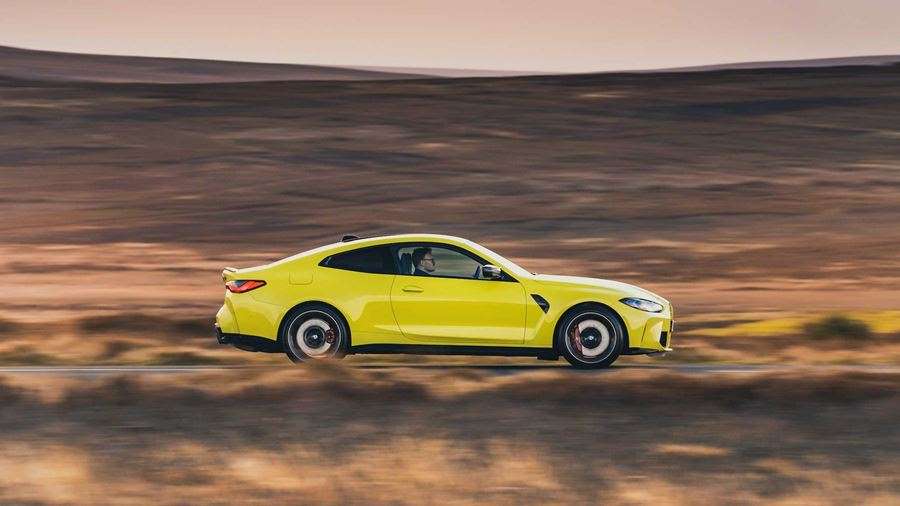
Why so hefty? Partly, it’s down to the increased reinforcement on the part-steel, part-aluminium CLAR platform. Braces to lock the front shock towers firmly to each other and the front bulkhead, elements to tie the stiffer subframe to the reinforced engine bay, underfloor shear panels – all of this in an effort to remove variables from the M4’s chassis.
And yet in truth, such weight gains feel like they’re there mostly because BMW knows it’s not the stigma it once was and that the average M4 customer still wants, no – scratch that, demands the creature comforts of a regular 4 regardless of the car’s sporting intentions. As a consequence, BMW has become the master of making its cars not necessarily hide weight (there’s only so far you can take that), but instead, work with the weight.
Like the F90 M5, the M4 Competition moves around tight corners on track (and on road), with a degree of agility that, not so long ago, wouldn’t have been out of place on the grid for the Nürburgring 24H. Wider, longer and tauter than its predecessor, it can take even greater speed into corners with the front-end that actively hunting down apexes given a little trail-braking encouragement. BMW’s engineers benchmarked the car against the previous M4 CS – and it shows.
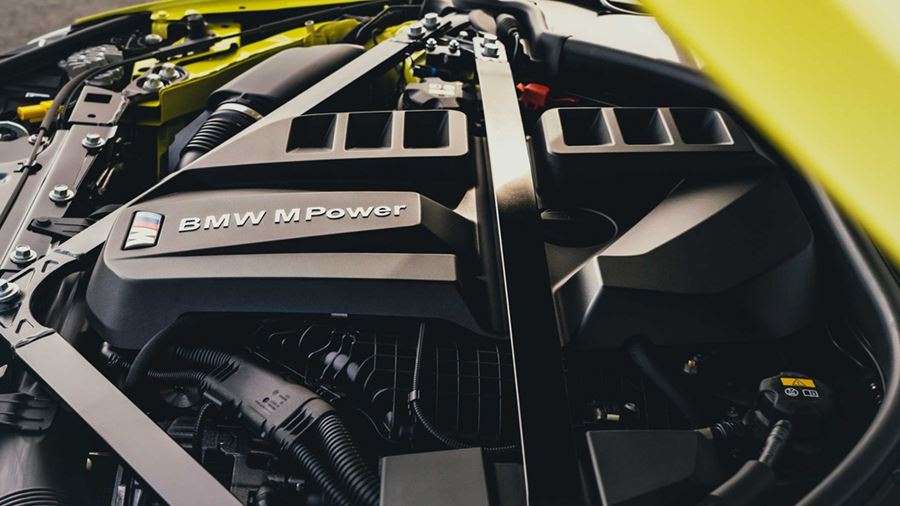
It’s especially effective in tight and medium-speed corners where there’s enough attitude from the rear to punch you away from the throes of understeer, keeping the line tight and the speed high. Sure, the front will still push wide if you’re not decisive enough on the throttle, but it doesn’t take long to get used to its pleasingly direct way of doing things.
And yet, that doesn’t mean that the M4 always plays nice. As mentioned, the engine is a much more tractable unit than before, but there’s still a sharpness, borderline nervouness to the car at the limit, that hints at the barely concealed aggression underneath. Big slides are possible – even encouraged – with the gimmicky but fun M Drift Analyser, yet it’s the transition from traction to no traction that leaves you a little unsure of where you stand. Although, as explained, much of this could have been down to the less forgiving Cup 2 tyres.
Either way, there’s no doubt more precise tools available for similar money. And while I don’t want to get too fixated on the 911, it certainly is one of them. The steering in the BMW, for example, is light and fast. Handy for the slower corners, but less helpful for delivering feel and stability in the faster stuff. Plus, the standard brakes, as powerful as they are still have their work cut out to bring 1.7 tonnes to a halt in a brisk and controlled manner. As a result, the M4 Competition is a car that’ll make you sweat, swear and question your own sense of self-preservation on a committed drive.
Which makes it all the more impressive that its capable of settling down into an exemplary everyday car with almost GT levels of refinement. The adaptive M suspension with electronically controlled dampers does a fine job of keeping the car level in sport plus settings, but the well-rounded ride in comfort mode is equally impressive.
As is the cabin layout, infotainment and optional Clubsport carbon bucket seats. A £3,000 option, they save a mere 9.6kg, yet sit you lower and more comfortably in the car. Admittedly, I still wanted to go down a few mms further, and if I’m being picky, the steering wheel rim is too thick. Yet there’s no doubt it’s an exceptionally nice cabin to spend time in.
Verdict
The BMW M4 Compeition manages to be both an accomplished all-rounder and a flawed, yet brilliantly exciting sports coupe all at the same time. It’s everyday on-road manners and luxuriously appointed cabin are almost beyond reproach. Yet start to press on the and the wave of seemingly limitless power and torque, combined with a veracious appetite for on-the-limit brinkmanship makes it a heart-stopping streetfighter of a sports coupe. And while it may not have the dynamic finesse of the 911 that its now priced so closely with, there’s more than enough reason to drop £80k on one of Munich’s most radical and controversial M cars yet.
Still nothing since Peugeot’s return to the U.S. market
Stellantis has suspended plans to bring Peugeot back to the US market, saying it wants to concentrate on "existing brands" in North America after the merger of PSA Group and Fiat Chrysler Automobiles gave the new concern a wider geographical reach.
The plan for Peugeot to return via the "big pond", where it was last in the early 1990s, was called into question after the finalization of the merger of PSA and FCA. Larry Dominic, the man who led the PSA's efforts to return to American soil since 2017, was appointed as the executive director of Alfa Romeo for North America on Friday, Hot Tires write.
A Stellantis spokesman said on Saturday that "the new context of the concern with a strong presence on the American market leads to a focus on existing brands."
"For that reason, they will develop Alfa Romeo in this market," the spokesman added.
Dominic has been preparing for Peugeot’s return to the U.S. for more than four years, with an emphasis on creating a distribution channel that would bypass expensive showrooms and take advantage of advanced technology as part of relieving customer service, such as scheduling and takeovers. The plan to return Peugeot to the United States was part of the "Push to Pass" medium-term plan from 2016, with a ten-year framework. Early efforts were concentrated on short-term rentals under the Free2Move brand.
The head of the conglomerate, Carlos Tavarez, wanted to reduce PSA's dependence on the stagnant European market. In recent years, that dependence has only grown, with the merger of GM's Opel / Vauxhall and a sharp drop in sales in China over the past few years. Tavarez was preparing for a possible return to the United States, ensuring that newer PSA models would be homologated for that market, using the expertise developed at Opel's engineering center in Germany.
Mercedes E-Class hybrid review
"The smooth and quick Mercedes E-Class plug-in hybrids combine luxury with impressive fuel efficiency”
Those who live out of town might only encounter heavy traffic during the latter stages of the daily commute to and from work. It's in these circumstances, where the roads get congested, slow and polluted, that a plug-in hybrid really makes sense, and the Mercedes E 300 e and E 300 de plug-in hybrid’s are compelling options for those who want a decent amount of pure-electric range and low running costs for the daily commute.
The E-Class hybrid range underwent a midlife facelift in 2020, getting a subtly tweaked exterior design that included a new grille and restyled LED headlights. The interior was also given a tech refresh with the latest touchscreen version of Mercedes’ MBUX infotainment system.
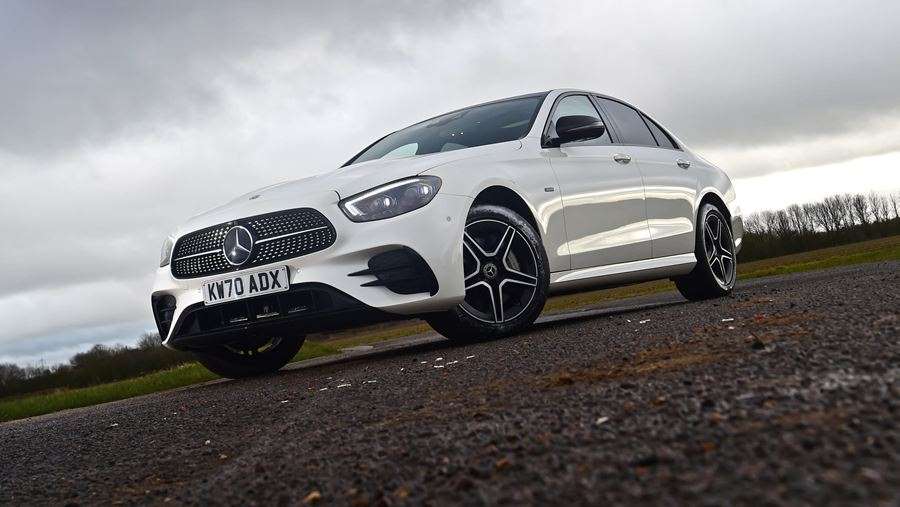
Unlike plug-in hybrid rivals such as the BMW 530e and Volvo S90 T8 Recharge, which can only be had with a petrol engine and electric motor, the E-Class hybrid is available as a petrol or a diesel, badged ‘E 300 e’ and ‘E 300 de’ respectively.
Both versions combine their conventional internal combustion engines with a compact battery and an electric motor that's capable of propelling the car using only pure-electric power, while emitting zero CO2 emissions. Mercedes claims both cars are capable of triple-digit fuel economy figures, low CO2 emissions and over 30 miles of pure-electric range.
In fact, make frequent use of that capability and you could come close to realising Mercedes' fuel-efficiency claims, while emitting less than 50g/km of CO2 – a figure far lower than a petrol or diesel car can deliver. The former is good news for anyone who has to pay for fuel and the latter will be appreciated by company-car drivers who have the cost of Benefit-in-Kind (BiK) tax to worry about.
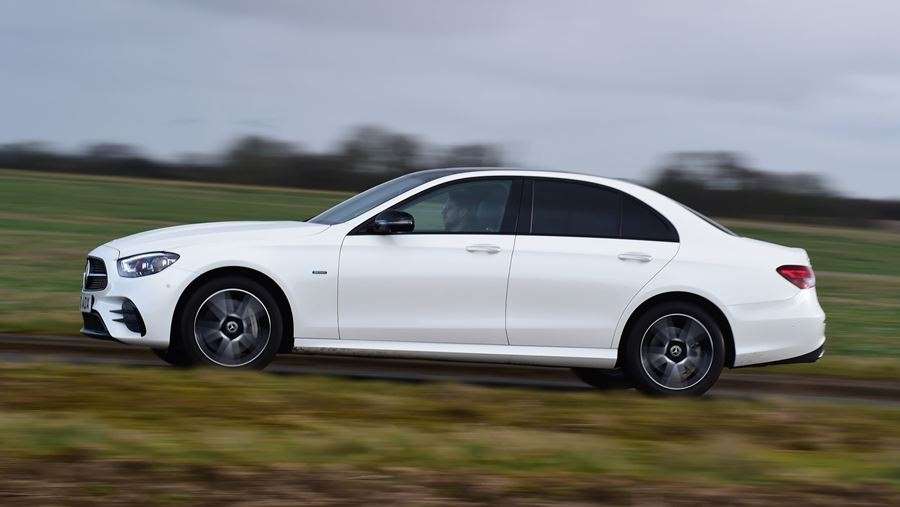
Away from what's under the bonnet, the cars conform to the usual E-Class template. That is to say you get an elegant, upmarket-looking car that continues to impress when you take a seat inside, finding yourself surrounded by high-quality materials, attractive finishes and advanced technology. A highlight of the latter is the dual-screen digital dashboard and infotainment system, as well as the smart blue mood lighting unique to the plug-in hybrid.
Every Mercedes E-Class is a smooth, quiet cruiser and the E 300 e and de are no exception. Although the four-cylinder petrol and diesel engines aren't as pleasing to the ear as a six-cylinder might be, it's certainly not obstructive and settles into the background once up to cruising speed. The ride is smooth and wind noise is minimal, so motorway cruising is relaxed.
The E-Class doesn't embarrass itself on winding roads, either – it doesn't have quite the steering precision of a BMW 5 Series or feel quite as agile when you pitch it into a fast corner, nor does it resist body lean as stoically as an Audi A6, but it's responsive, safe and well controlled, so you can take the rural route home in a hurry if you want to. There's no shortage of power, either – the E 300 e petrol engine produces 208bhp and the 121bhp electric motor provides a handy boost, for a total of 316bhp when you need it. Acceleration from 0-62mph takes less than six seconds.
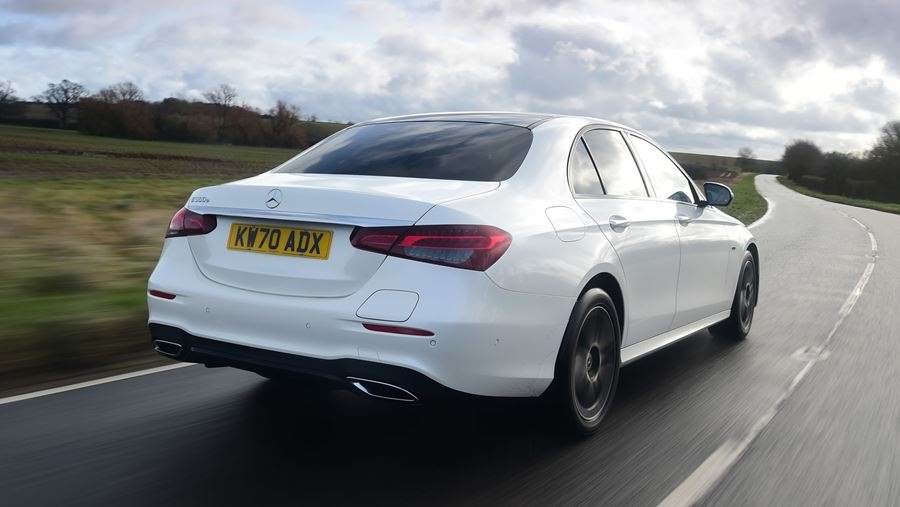
The E 300 de diesel version is no slouch either, taking 5.9 seconds, and might be better suited to those who make frequent long high-speed journeys with an urban portion at either end.
Overall, the E-Class is a fantastic executive saloon that makes plenty of sense for business drivers. Its range and technology impress, as does refinement and the interior, but we'd stick with the AMG Line Edition without adding expensive Premium packs for the best value.
MPG, running costs & CO2
Business drivers stand the best chance of saving money in a Mercedes E 300 e or de
If your daily commute runs to no more than 15 miles each way, both the petrol and diesel versions of the Mercedes E-Class plug-in hybrid can get you to work and back without having to burn any fuel at all. This is courtesy of a claimed all-electric range of over 30 miles, which also helps the E 300 e to return a claimed fuel-economy figure of 176.6mpg, with the E 300 de even more efficient at up to 235.4mpg. The digital dashboard gives suggestions for economical driving, which can actually be curiously engaging to follow, gamifying the driving experience.
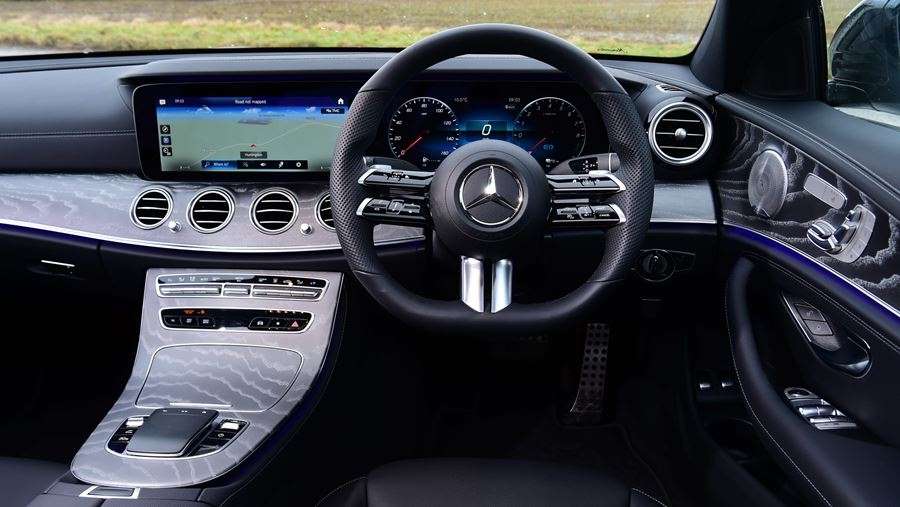
However, the testing procedure under which these economy figures were achieved assumes that owners can maximise the use of electric mode for a majority of their driving. If you cannot recharge the battery, or are making longer journeys where the battery becomes depleted, then you will be relying on the engine more often, which will make the official fuel consumption figures impossible to achieve.
During our test of the E 300 e, we spent the majority of our time running in pure-electric mode. One of the most impressive aspects of the car is its realistic electric range estimate, with a mile of range falling for every actual mile travelled - sadly this isn’t the case in every electrified car.
While Mercedes claims 33-35 miles of range with a fully charged battery, most drivers should be able to manage close to 20-25 miles in mixed driving, with around 30 miles possible at slower speeds in town. With the battery depleted, fuel economy is liable to fall to around 35mpg.
When compared to the petrol version, the E 300 de is a slightly different prospect that’s aimed at higher mileage drivers. While the claimed fuel economy of over 200mpg is a little fanciful, regular charging of the battery and careful use of the car’s driving modes returns around 51mpg across a mix of town and motorway driving. When running on pure-electric power, we were able to eke out around 15-20 miles, which is somewhat short of the 32-34 miles claimed by Mercedes. Once the battery was depleted, fuel economy fell to around 43mpg.
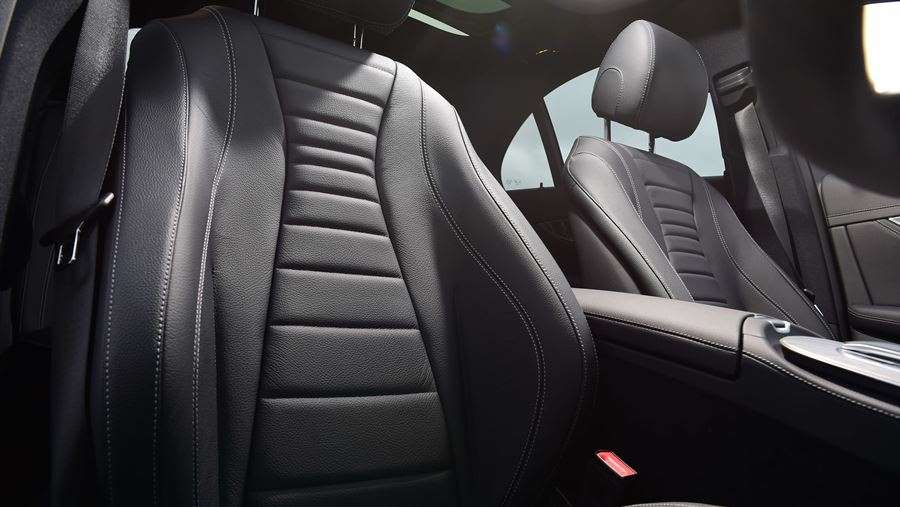
Every E-Class hybrid offers different driving modes to either hold onto battery charge (until you reach a town for instance), stay in electric mode, or use a mixture of engine and electric power. All aim to help the driver to maximise fuel economy.
The official CO2 emission figures of both cars are cast in stone regardless of your driving habits, with the E 300 e emitting 37g/km and the E 300 de just 33g/km. This means that company-car users can enjoy a low Benefit-in-Kind (BiK) rating, which is far lower than any pure petrol or diesel version of the E-Class; the likes of the E 200 and E 220 d sit close to the top of the BiK ratings.
The 13.5kWh battery can be charged via 7.2kWh wallbox in 1.5 hours. Opt for a three-pin plug socket and you can expect to wait around five hours for charging to complete. Unlike fully electric cars, there’s no fast-charging option.
Other running costs are unlikely to differ from the Mercedes E-Class norm, which is to say expensive servicing but reasonable parts prices and tyres that are a fairly common, sensibly priced size. You can take out a service contract to help manage the cost of routine servicing, and there's a three-year/unlimited-mileage warranty, which can be extended at extra cost.
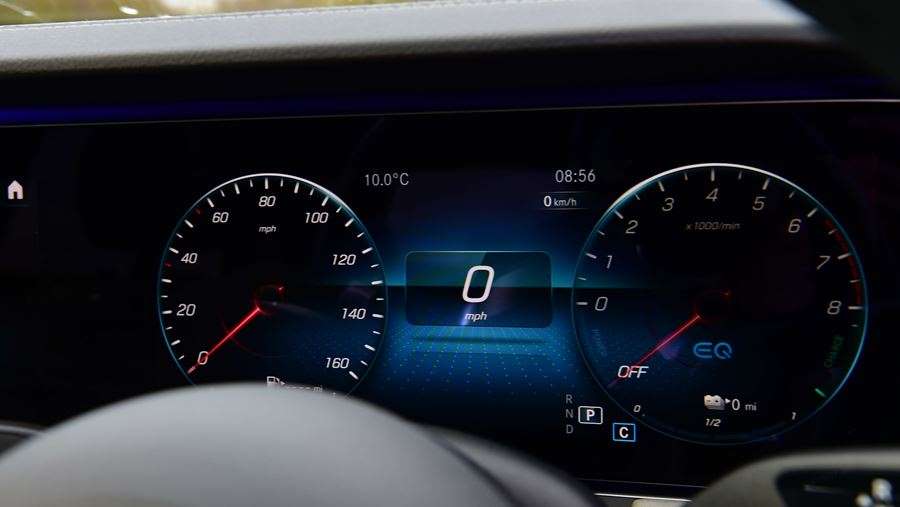
The E-Class hybrid costs more than £40,000 to buy, incurring an additional tax surcharge of £325 a year. After this period, tax falls to the typical reduced rate for hybrids.
Engines, drive & performance
Plug-in hybrid power serves up strong performance, but doesn't bring excitement
The Mercedes E 300 e plug-in hybrid is very similar in concept to its BMW 530e hybrid rival. Both cars use a 2.0-litre turbocharged petrol engine, a battery pack and an electric motor. The Mercedes is faster, though.
With 208bhp from the petrol engine alone, 121bhp available from the electric motor and a total of 316bhp to call upon when you need it, the E 300 e can sprint from 0-62mph in 5.7 – and sprint is the operative word, with the electric motor capable of delivering all its power instantly. This makes it feel surprisingly urgent when you nudge the throttle, despite its size and weight.
However, the four-cylinder petrol engine can sound somewhat strained if you floor the throttle, with a noise that isn't as smooth or pleasing to the ear as the V6 in the Mercedes-AMG E 53; it just emits a nondescript wall of sound under full acceleration. This fades away when you take it easy, though, and is quieter than the E 220 d's diesel engine when cruising on the motorway. It's a shame, though, that such exciting acceleration doesn't come with an equally appealing soundtrack, and that the petrol engine has to work that much harder once the battery is depleted.
The E 300 e doesn't offer the last word in driving pleasure on a twisty road, either. Instead, the E-Class focuses on comfort and refinement over outright handling prowess. It feels planted and secure in corners but falls short for driver involvement when compared to a BMW 5 Series or Audi A6, even if its steering has a nicer feel.
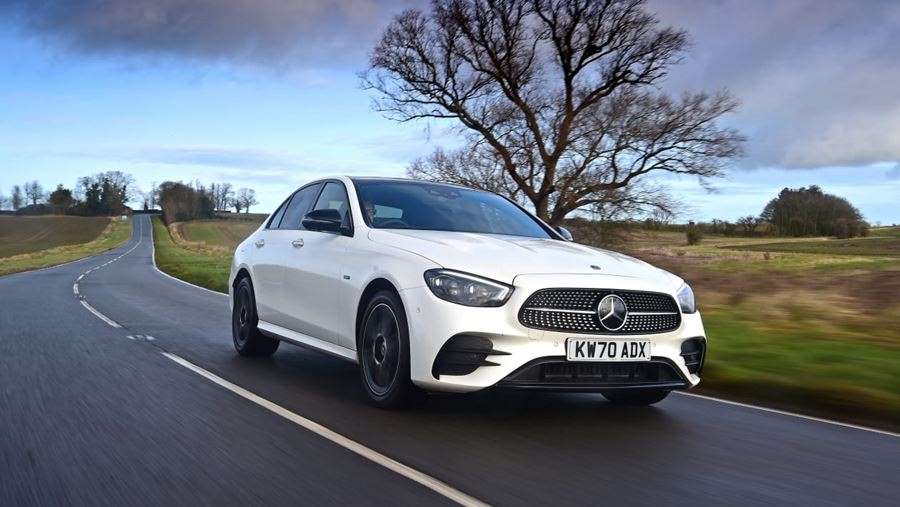
In terms of overall refinement, the E-Class excels against its rivals and the E 300 e is no exception. It absorbs bumps and potholes with ease, especially if you add the optional air suspension. There's barely any wind noise at motorway speeds, and engine noise only becomes noticeable when overtaking or joining fast-flowing traffic.
During normal driving, the switch between petrol and electric power is barely noticeable, but is perhaps not as smooth as it could be. Once in all-electric mode at lower speeds, there's barely any noise at all, aside from a faint hint of tyre roar and the whirr of the electric motor.
With a combined 302bhp and 700Nm of torque, the diesel powered E 300 de feels as quick as its petrol power sibling, with the benchmark 0-62mph time taking 5.9 seconds. In real-world driving, it offers more shove than the E300 e thanks to the increased pulling power from the 2.0-litre diesel engine.
Switching between electric and diesel power is fairly unobtrusive, with a distant thrum letting you know the engine has started. On occasions in electric mode, the car did hesitate slightly under hard acceleration as it decided whether to fire up the diesel engine.
Much like the petrol-powered version, the E 300 de is smooth and refined on the move, with only the occasional hint of diesel clatter making its way inside the car. The additional pulling power of the diesel engine means there’s always enough power in reserve for getting up to speed or overtaking.
Again, the E 300 de cannot match the dynamics of a diesel 5 Series, but offers a greater level of refinement. It feels planted though, with plenty of grip and accurate turn in. In sharper corners, the additional weight of the diesel engine is noticeable, but the handling is good enough for most drivers.
Interior & comfort
The Mercedes E 300 e has a hi-tech look inside, without feeling cold or unwelcoming
The ability to cruise so quietly on the motorway makes it easier to enjoy the E-Class hybrid’s comfortable and well-designed interior. Both the petrol E 300 e and diesel E 300 de are identical inside, and while the Audi A6 may offer a more futuristic look and improved material quality, many will prefer the more traditional, comfortable feel of the Mercedes.
In terms of overall refinement, the E-Class excels against its rivals and the E 300 e is no exception. It absorbs bumps and potholes with ease, especially if you add the optional air suspension. There's barely any wind noise at motorway speeds, and engine noise only becomes noticeable when overtaking or joining fast-flowing traffic.
Dashboard
The specification of the E-Class plug-in hybrid range is the same as the standard car, with every version getting a pair of 12.3-inch displays mounted in parallel to create the illusion of a seamless display that flows from in front of the driver to the centre console. It incorporates a fully configurable digital instrument cluster that can display a rev counter or an 'efficiency' gauge that can help you eke the most range from the car’s battery.
The left-hand panel hosts the touchscreen infotainment display, which incorporates sat nav with 3D mapping, Bluetooth smartphone connection, DAB radio, and access to Mercedes' online services. These include a concierge service that can provide real-time information about parking spaces and local petrol prices.
As part of the 2020 facelift, the infotainment system has been improved and is easier to navigate. The addition of a responsive touchscreen makes it easier to operate with Mercedes’ MBUX infotainment system, which is on par with the best in the class. Top versions even feature augmented reality sat nav, which overlays directions on a live video view of the road ahead. Apple CarPlay and Android Auto are both included, and are far more straightforward to use via the touch interface. The addition of the full-screen digital dials is a nice touch as well, adding a luxury element from the S-Class.
The facelifted E-Class boasts an all-new steering wheel, which features a number of physical buttons. This layout is slightly confusing at first but is easy to get used to.
Equipment
Every version of the E-Class plug-in hybrid is well-equipped, with the entry-level AMG Line Edition (an exclusive trim for the PHEV models) getting 18-inch alloy wheels, LED headlights, heated seats, leather-trimmed upholstery, three-zone climate control and an array of standard safety kit.
Plusher AMG Line cars get multibeam LED lights and different interior trim. Stepping up to the AMG Line Premium trim adds to the kit list further still, with a 360-degree camera, augmented reality sat nav and keyless go.
The range-topping AMG Line Night Edition Premium Plus is fitted with a panoramic sunroof and gloss black detailing. Inside you get a premium Burmester stereo system and ash wood interior trim but the additional outlay means we think the standard AMG Line car is better value.
Practicality & boot space
The Mercedes E 300 e boasts lots of space for passengers, but batteries reduce boot space
On top of its elegant, high-quality interior and generous list of standard equipment, the Mercedes E-Class has lots of space for passengers to stretch out. It's not short of luggage room, either but does feature a smaller boot than the conventional models.
The latest E-Class was designed with a longer wheelbase (the distance between the front and rear wheels) than its predecessor, and that extra length has gone towards increasing interior space, particularly legroom. The front seats have lots of adjustment as standard, with fully electric memory seats available if you do find the perfect driving position elusive.
In the back, the E-Class nips at the heels of the more expensive Mercedes S-Class when it comes to space. The curvaceous roofline means rear headroom is the one area that could be more generous, but most will find legroom to spare, and only when there's a fifth person in the centre rear seat do passengers rub shoulders.
Interior storage is generous, too, with a large glovebox, storage area beneath the centre armrest and a wireless phone charging pad at the base of the dashboard.
The car’s battery has been fitted under the boot floor, which affects boot space. At 370 litres, the hybrid E-Class loses over 100 litres when compared to a standard petrol or diesel model.
Reliability & safety
The E-Class has strong safety credentials, but Mercedes' reputation for quality varies between owners
The Mercedes E-Class has yet to feature in our annual Driver Power owner satisfaction survey. However, taking into account all the Mercedes models that did feature, the brand finished in 28th place out of 30 manufacturers in 2020. Ending up towards the bottom of the table was an uninspiring result for a premium brand, but BMW actually finished just one place ahead of Mercedes. Both were beaten by 21st-place Audi, while Jaguar finished in a far more respectable 12th position.
Mercedes owners seemed particularly disappointed by servicing and running costs. Interior styling and build quality received more praise than handling and ride comfort, and reliability was regarded as below average, with 24% of owners reporting a fault within the first year of ownership.
The brand is often regarded as something of a pioneer when it comes to on-board safety equipment. The E-Class offers sophisticated features such as autonomous emergency braking (AEB), lane-departure warning and lane-keeping assistance, auto-dipping headlights and traffic-sign recognition, as well as active cruise control.
The plug-in hybrid E-Class shares its five-star Euro NCAP crash safety rating with other models in the range – the independent organisation awarded the Mercedes a 95% score for adult protection in a crash and rated it at 90% for how children are protected.
Petrol or Diesel - eternal doubt, which is better !?
You’re thinking about buying a new car, and so far you haven’t thought about the engine and the differences between a gasoline and a diesel engine. We may bring you a little closer to the advantages and disadvantages of the same to make the decision easier. In the end, your opinion and experience will be of great help to us in answering the eternal question of gasoline or diesel?
DIESEL
Diesel engines have a longer range, as they consume slightly less fuel than a classic petrol engine, and at the same time your full tank will last longer. 25 to 30% better economy compared to a petrol engine. Also, a diesel engine will in some cases be more economical and efficient than hybrid vehicles that combine a petrol and electric engine, of course depending on the model and the fast-growing technology that is changing the picture of consumption day by day.
Although until recently diesel was cheaper than gasoline, the story has not been in favor of this lately. The prices are approximately the same, so there is not much difference in that range. Diesel fuel is used in many more industries than gasoline, in addition to its use in road traffic, which causes prices to rise.
Definitely today the price is not a big difference, yet diesel fuel should achieve 25 to 30% higher price in order to lose the difference in economy. Diesel fuel is considered more efficient because it contains more benefits from the heat energy it generates.
Of course, the above works better, but in a real situation the heat generated by high-pressure auto-ignition in a cylinder differs from the explosion in a cylinder generated by gasoline fuel under the influence of spark plug and fuel air, so diesel fuels do not result in such high performance. engines, but modern diesels offer higher torque. Gasoline engines tend to be large, fast, and powerful, while diesel engines are slower and more durable.
As we have said, diesel engines do not have a spark plug, so there is no need to change it, ie the cause of not starting the engine should be sought in that part. Diesel engines are also easier to withstand high pressure and compression and most often the engines last longer than conventional gasoline without major repairs. You may not need to cover 500,000 km with a single vehicle, but it is certainly of great importance when assessing a vehicle in the event of a sale.
If you ignore some of the advantages listed above, you should not be surprised by more expensive maintenance during repairs, because diesel engines are technologically a little more advanced or more demanding.
PETROL
Purchase cost and fuel consumption. The initial cost of purchasing a gasoline engine is lower, however its consumption will later be slightly higher compared to the same engine power.
Fuel is easily available at all gas stations in several different qualities, and the winter months make almost no difference in terms of repairs because there are no problems with ignition.
Maintenance and parts are somewhat more economical in nature, but require somewhat more frequent inspection of the engine and all associated units. Starting the engine is of a different nature, so the service intervals could be a bit shorter.
Spare parts are often cheaper and more readily available. Gasoline engines have a higher regulated speed and a more flexible engine.
Less torque, less vehicle weight more easily transfer power to the ground. Easier to start the vehicle in cold weather.
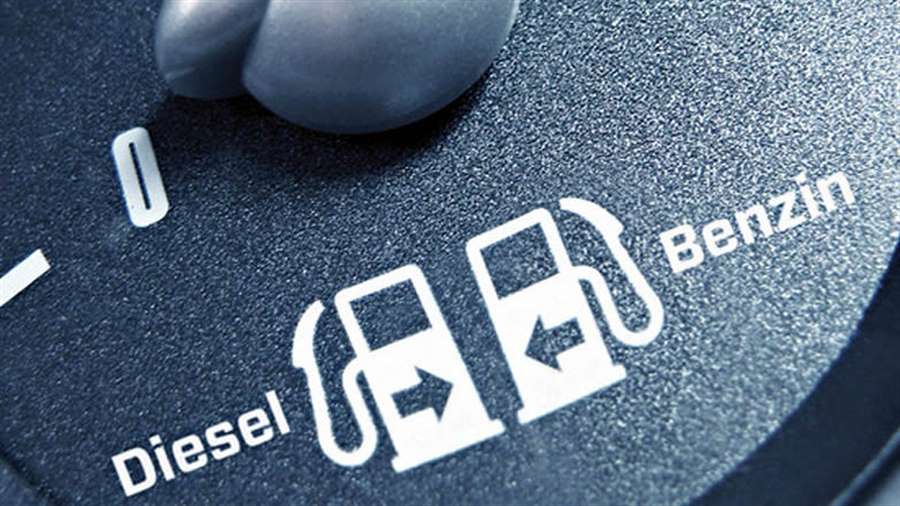
Everyone should decide what is best for them and what their individual needs are. Personally, it is necessary to do a little research before buying a vehicle is realized. We are sure that no one is aiming to spend a few thousand or tens of thousands of kunas, only to realize afterwards that you have made a mistake. Take enough time, even when these seemingly insignificant segments are in question, but you will certainly be more satisfied if you adapt exactly what you need to yourself and your needs.
Also keep in mind what the needs are in relation to the daily use of your vehicle; the highway, city driving, the environment in which you drive, what exactly you need the vehicle for, the purpose, the expected lifespan and the frequency of use, are all reasons that are very important to think about beforehand.
2021 Lexus ES 250 AWD Review: A Peculiar but Needed Lexus ES
The verdict: The 2021 Lexus ES gets all-wheel drive for the first time, though it might not be what you’d expect: Four-wheel traction is paired only with a noisy, modestly powered four-cylinder engine.
Versus the competition: With disappearing competition, the ES remains one of the last large, affordable luxury cars on the market that isn’t hellbent on being sporty.
The 2019 redesign of the Lexus ES made it a more accomplished luxury car with a higher-quality interior and improved isolation from road and wind noise, but that wasn’t the end of the updates for the ES: For 2021, Lexus has added a gas-only four-cylinder model, called the ES 250, that brings all-wheel drive to the party for the first time. Strangely, it’s not really appropriate to call the four-cylinder a “base” engine, because the ES 250 with AWD has a starting price identical to the front-wheel-drive-only V-6 ES 350, at $41,025 (all prices include destination charges).
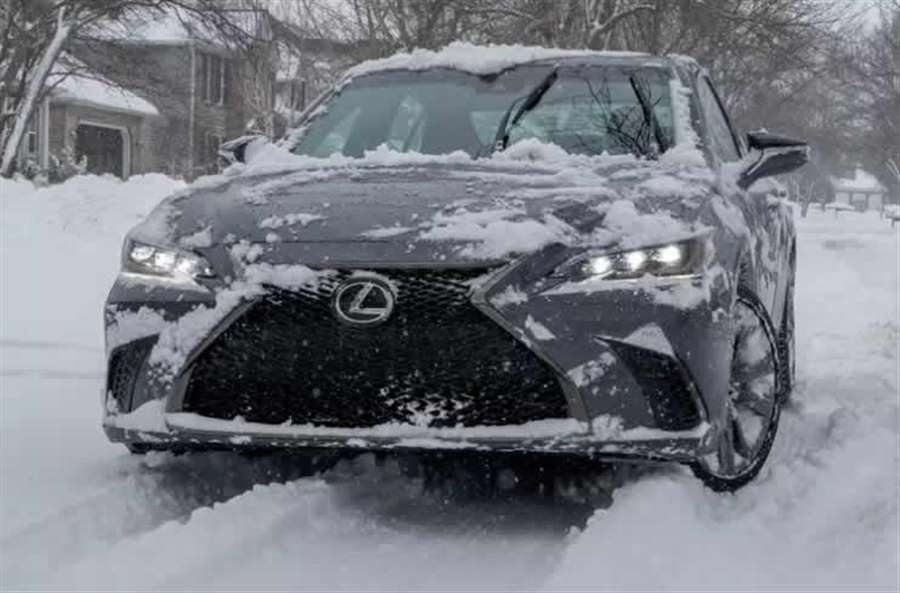
The ES faithful will find this newest AWD, four-cylinder variant very different from what they’re used to, but the ES faithful may not be the market for the new version. Mid-size luxury sedans aren’t exactly a hot ticket right now, as luxury and non-luxury automakers alike have increasingly turned their focus to SUVs. The ES 250 may instead serve multiple consumers: buyers looking for SUV-like all-season capability in a familiar sedan package, and those looking for an alternative to the discontinued Lexus GS, which was previously Lexus’ sportier mid-size sedan. (The ES F Sport variant will be the best bet for these shoppers.)
All-wheel drive is new for 2021, but it’s only available with the also-new 2.5-liter four-cylinder engine that makes 203 horsepower and 184 pounds-feet of torque. Strangely, the ES 350’s accomplished and refined 3.5-liter V-6, which often overpowers the front tires on that car, can only have front-wheel drive. The ES 250’s power is a bit underwhelming for a 3,780-pound sedan — a Toyota RAV4’s power-to-weight ratio is more favorable. In my experience, though, the Lexus’ eight-speed automatic transmission reacts more quickly while passing than in similar front-wheel-drive Toyota/Lexus applications, so the four-cylinder doesn’t feel underpowered. It’s not as rewarding an experience as you get from the base turbocharged four-cylinders in the BMW 3 Series or Audi A4, and the ES 250’s grainy-sounding four-cylinder is unbecoming of the otherwise buttoned-up sedan.
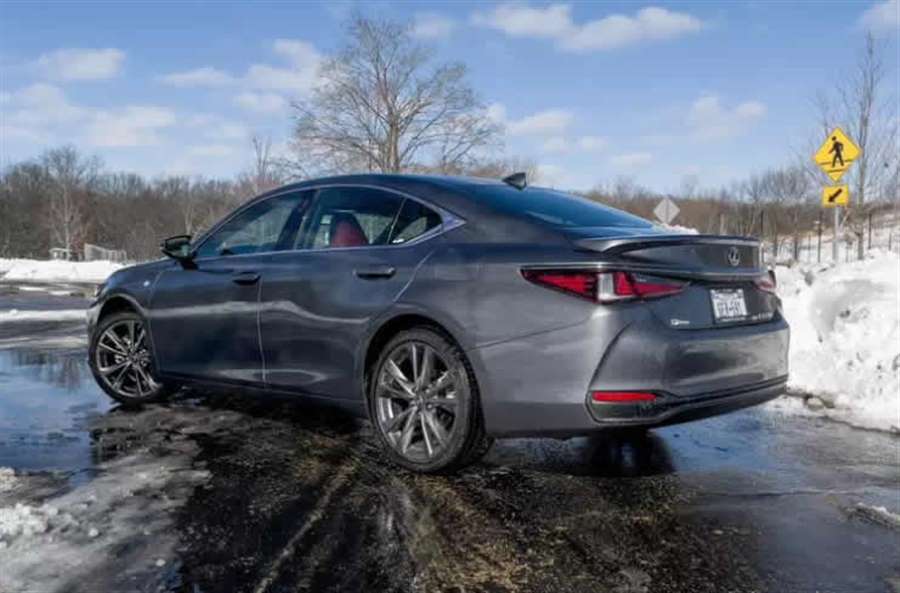
In other cars, Toyota’s 2.5-liter is a commendable engine with surprising torque and linear power delivery, but it seems mismatched in the ES thanks to its rough soundtrack. Both during moderate acceleration and near redline, the engine wheezes through its powerband. That’s less of an issue in the non-luxury setting of parent-company Toyota’s cars and SUVs, where this engine more frequently appears, but it stands out in the Lexus. Competitors’ turbocharged four-cylinders don’t have to rev as high or as frequently, and turbos — driven by exhaust gases — act as an additional muffler to help hide ugly engine sounds. The Lexus is not turbocharged.
The ES 250’s power and acceleration deficits are substantial compared with the ES 350, making 99 fewer horsepower and 83 fewer pounds-feet of torque (the V-6 is rated 302 hp and 267 pounds-feet of torque). Lexus says the ES 250 accelerates from 0-60 mph in 8.6 seconds, making it the slowest ES in the lineup. The ES 350 makes that run in 6.6 seconds, and even the ES 300h hybrid sprints to 60 mph in 8.1 seconds. The hybrid also uses a 2.5-liter four-cylinder, but it pairs with an electric motor for a combined 215 hp. Two seconds slower to 60 mph is a difference you feel in the seat of your pants. In addition to having the least power in the lineup, the ES 250 AWD is also the heaviest ES — by 90 pounds over the 350 and 50 pounds over the 300h.
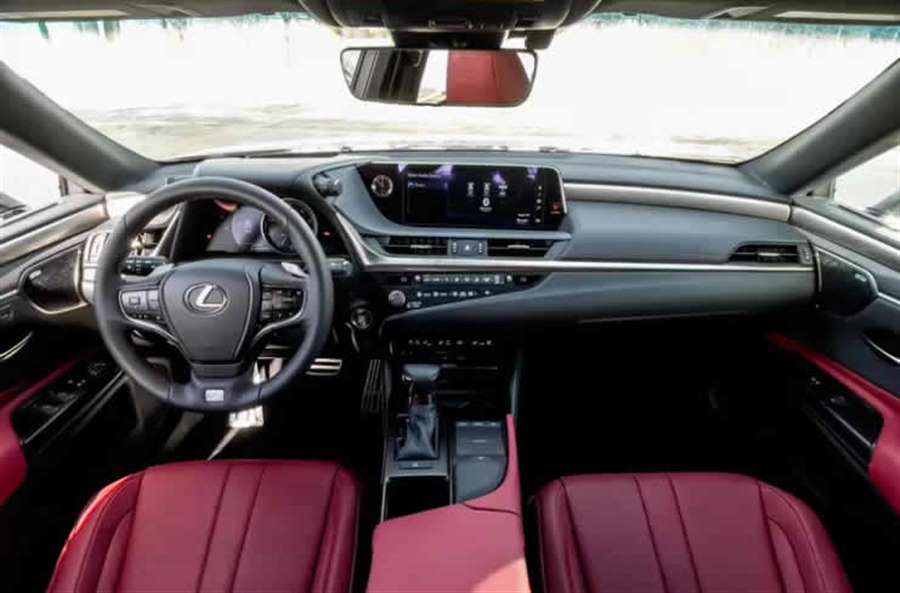
The second attribute making the ES 250 unique is its new all-wheel-drive system, which can direct as much as 50 percent of the engine’s torque to the rear wheels for traction. I put the ES 250’s AWD to the test during a snowstorm that dumped 8 inches of snow overnight, burying the Lexus to its rocker panels in wet, heavy snow. The ES did its job clawing out of my uncleared driveway and unplowed neighborhood streets, all the way to a major street that had been plowed — and that’s really all this kind of system needs to do.
It wasn’t flawless, though. The snow scraped the car’s underbelly thanks to its sedan ground clearance, and it hesitated briefly when accelerating from a stop as the all-season tires spun for grip. It was slowed by its traction control system, but the ES eventually gained steam without having to change drive modes or disable traction control for more wheel speed.
The ES 250’s all-wheel-drive system is a now-common type with front-to-rear torque transfer and the ability to decouple for increased fuel economy. It’s the same type you’ll find on the related Toyota Avalon and smaller Toyota Camry, but it’s really more similar to the AWD systems you’d find on small SUVs — not so much a performance-minded luxury sedan. The Acura TLX, for example, has a mechanical torque-vectoring rear axle for on-road dynamics, and the discontinued Buick LaCrosse was an odd host for impressive dynamics with its twin-clutch torque vectoring rear axle (RIP). The ES 250’s system does little, if anything, for on-road performance driving — but it isn’t much needed, considering that on dry roads the less-powerful four-cylinder mitigates the ES 350 V-6’s power-on-traction disadvantage anyway.
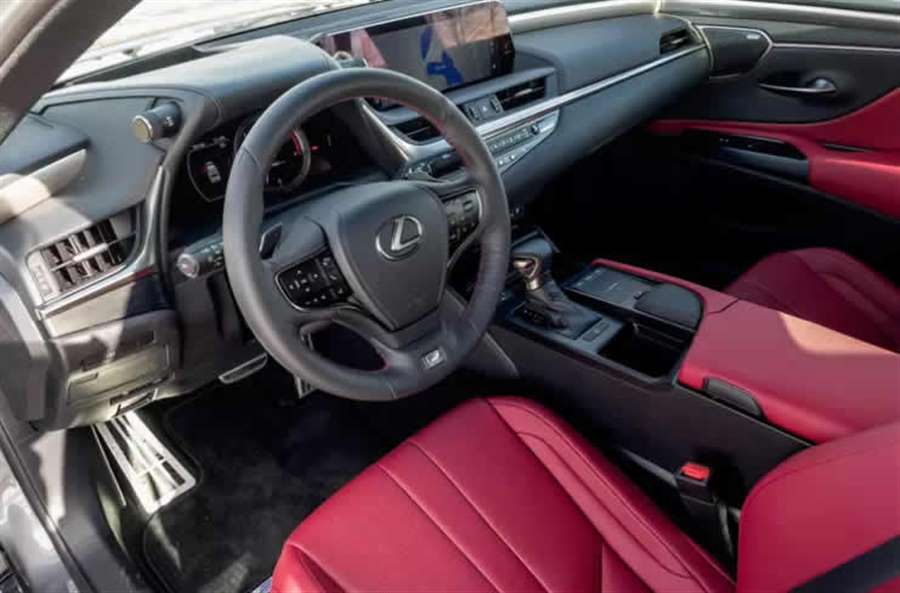
Other than driveline, much of the ES 250 AWD is unchanged from the ES 350. The same is true of the 250 F Sport I drove, which uses the same wheels, tires and suspension tuning as the 350 F Sport, though the ES 350 F Sport is also available with an optional adjustable firmness suspension. The ES F Sport has a taut ride with more road feel than previous generations, but it’s not offensive or uncontrolled. It’s firm enough, however, that you’d best pass up the F Sport if you’re looking for the classic ES ride quality. The ES F Sport is essentially a proficient handling package, but it’s still not as eager to drive spiritedly as the outgoing rear-wheel-drive Lexus GS F Sport. That said, it also doesn’t crash over rough roads like other F Sport treatments (on the Lexus RC, for example), where large impacts shudder through the whole chassis. As a whole, the ES F Sport is quite livable.
What hasn’t changed with the new engine and all-wheel-drive system is the ES’ generous occupant and cargo dimensions for the price, though it doesn’t have a folding backseat like the related Toyota Avalon. The ES is considerably larger and more comfortable than a BMW 3 Series, Audi A4 or Lexus IS. In fact, few remaining competitors match the ES’ price-to-size ratio. The Buick LaCrosse used to, but it’s gone now. The previous-generation Genesis G80 was close, until its pricing ballooned with its 2021 redesign.
What’s left? The Cadillac CT5 (formerly the CTS) is a compelling alternative that has some of the comfort vibe of the ES, but with more balanced ride and handling and without having to splurge for an additional performance suspension option. The last CT5 I tested had the optional 335-hp, twin-turbocharged 3.0-liter V-6 with all-wheel drive, which Cadillac says goes from 0-60 mph in 4.9 seconds; as-tested, it stickered at $52,155. The ES 250 F Sport with AWD that I tested for this review cost $53,400, but it had a lot more advanced driver-assist tech than the CT5. The ES comes standard with full-speed adaptive cruise control and lane centering, and all trims except the base model have blind spot monitoring with rear cross-traffic alert.
Little else on the ES has changed since 2019, which means it has a commendably rich interior for its price; it showed off well in our test car’s red interior. I can’t say the same about the CT5. The ES, however, remains saddled with a touchpad-based multimedia and control system — no touchscreen. The available 12.3-inch screen is at least high resolution, and it includes Apple CarPlay and Android Auto. It’s easy to view while driving, if hard to control. Lexus may be at a turning point, however, as the RX SUV received a well-done touchscreen for 2020 without a major redesign to the whole car, which means there’s hope yet that this major sticking point will be resolved with an update in the (near?) future.
Should You Buy the ES 250 AWD or ES 350?
In the weirdest turn of the model year, the ES 250 and ES 350 have identical pricing, both starting at $41,025. Their standard features are nearly identical, but the ES 350 can be equipped with a panoramic glass roof and adaptive shocks, while the ES 250 can’t. As for gas mileage difference, it’s minor: The ES 350’s 22/32/26 mpg city/highway/combined is only 2 mpg combined less than the ES 250’s 25/34/28 mpg. Both cars make their maximum power on regular octane — not premium, like most luxury cars — so between the two powertrains you’re looking at an estimated gas price difference of only $100 per year, based on 15,000 miles a year at current fuel prices: $1,350 for the ES 250 and $1,450 for the ES 350. So, if fuel economy and price aren’t much of a consideration, what is? Honestly, it’s whether you need AWD.
If you have good snow removal — or little snow — and flat ground, a FWD ES 350 with good tires (all-seasons rated well in snow or dedicated winter tires) will most often be fine. All-wheel drive is most useful in deep snow or on roads/driveways with inclines. If you don’t need AWD, there’s little reason to consider the four-cylinder ES, given it’s not less expensive, it’s considerably pokier and louder, and its AWD doesn’t make the ES a more engaging sports sedan on dry roads. What it does do, however, is make the ES more appealing to a crowd that would otherwise be looking at an SUV. There’s comfort knowing you’ll be ready for just about any weather condition, and the ES 250 starts a full $5,000 less than a comparably sized mid-size Lexus RX SUV.
As for its qualifications as a GS 350 replacement, the AWD ES 250 is pretty far off. There’s no hope on the horizon for GS loyalists, either, as a Lexus spokesperson says there are no plans to add AWD to the ES 350 in the near future.

